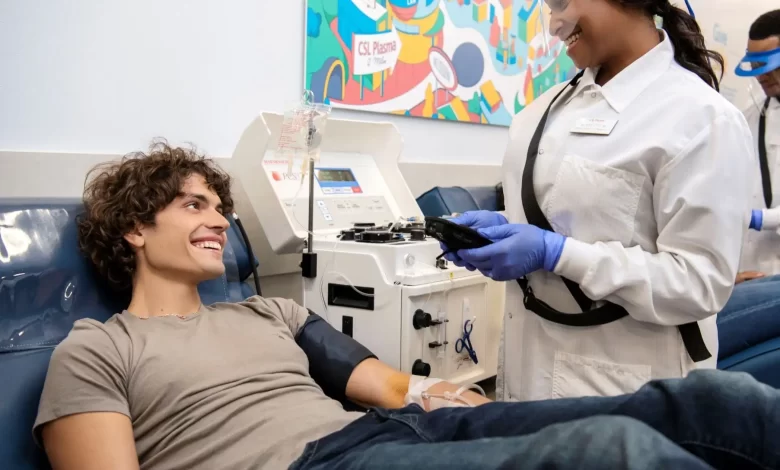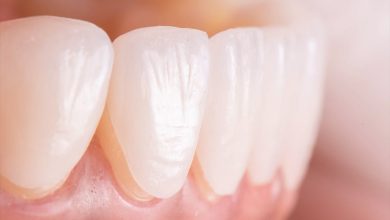How to Donate Plasma in San Diego: A Complete Guide

Key Takeaways:
- Plasma makes up about 55% of blood volume and is essential for transporting substances throughout the body.
- It contains proteins like immunoglobulin and clotting factors crucial for immune response and preventing bleeding.
- Plasma donations are vital for treating medical conditions and advancing medical research and innovation.
- Eligibility for donation generally includes being at least 18 years old, weighing a minimum of 110 pounds, and passing a health screening.
- The donation process lasts about 1.5 to 2 hours and involves a comprehensive screening and plasma collection using a sterile method.
- San Diego offers multiple top-rated plasma donation centers with a focus on donor care and community health initiatives.
- Myths about plasma donation include fears of pain and depletion; the process is safe, and plasma replenishes quickly.
- Each donation can save multiple lives and supports clinical research for new treatments, making plasma donation a highly impactful act.
- Advocating for plasma donation in your community can inspire others and help dispel myths surrounding the donation process.
Understanding Plasma Donation: The Lifeblood of Medical Innovation
What Makes Plasma So Special?
Plasma is the yellowish liquid portion of blood that is crucial for a variety of bodily functions and medical treatments. Comprising about 55% of total blood volume, plasma is primarily made up of water (92%), electrolytes, proteins, and waste products. What sets it apart is the fact that it serves as a transport medium, carrying blood cells, nutrients, hormones, and proteins throughout the body. This is essential during emergencies such as surgeries, trauma cases, or illnesses, making plasma a critical resource in medical settings.
One of the most important proteins found in plasma is immunoglobulin, which plays a vital role in the immune response. Additionally, clotting factors contained in plasma are essential for preventing excessive bleeding during injuries. The unique composition of plasma allows it to be used as a treatment for various medical conditions, including liver disease, hemophilia, and certain autoimmune disorders. By donating plasma, you not only help individuals in immediate need but also contribute to the development and innovation of medical treatments that will benefit countless others.
The Science Behind Plasma: A Look at Its Components and Benefits
The components of plasma are what make it so beneficial to healthcare. Plasma consists mainly of water, which serves as a solvent, but its real value lies in its proteins. These proteins include albumin, which helps regulate blood volume and pressure, globulins, which are essential for immune function, and fibrinogen, which plays a crucial role in blood clotting. The extensive collection of antibodies within plasma creates a unique platform for advancements in immunology and treatment protocols.
Understanding the benefits of plasma goes beyond its immediate life-saving capabilities. Plasma-derived products like albumin and clotting factors are utilized in treating various conditions over the long term. For example, clotting factor concentrates derived from plasma are crucial for those with hemophilia, allowing them to lead functional lives free from excessive bleeding episodes. The continuous need for these medical resources makes plasma donations an enduring requirement in the health sector.
How Plasma Donations Impact Medical Research and Treatment
When you donate plasma, you are not only providing a lifeline to patients but also fueling the engine of medical research and innovation. Plasma donations are essential for creating therapies that combat diseases such as hepatitis, HIV, and various neurological conditions. Researchers utilize donated plasma to develop new medications, vaccine formulations, and understanding the mechanism of diseases.
Each plasma donation contributes to a larger repository of knowledge and potential cures. For instance, convalescent plasma received special attention during the COVID-19 pandemic for its use in treating infected patients. Researchers explored its ability to transfer passive immunity, significantly impacting treatment protocols. Donating plasma thus has systemic consequences, affecting clinical practices and the advancement of healthcare technologies, making the act of donation both altruistic and invaluable from a scientific perspective.
Your Plasma Donation Journey: From Screening to Donation
Eligibility Requirements: Are You a Plasma Hero?
Before embarking on your plasma donation journey, it is essential to understand the eligibility criteria set forth by blood donation organizations. Generally, you must be at least 18 years old, weigh a minimum of 110 pounds, and possess a valid government-issued ID. Additionally, potential donors are screened for certain medical conditions, medications, and travel history to ensure the safety and efficacy of the donated plasma.
Individuals with specific health issues such as certain infections, active cancers, or high-risk behaviors may be temporarily or permanently deferred from donating. Understanding these guidelines shows not only the importance of donor safety but also the integrity of the plasma collected. If you’re healthy and meet these criteria, you can be a plasma hero, making your contributions vital to the wellbeing of others.
The Screening Process: What to Expect on Donation Day
When you arrive at the donation center, you will undergo a comprehensive screening process to confirm your eligibility. This initial step usually includes filling out a detailed medical history questionnaire and undergoing a physical examination, where your blood pressure, temperature, hemoglobin levels, and pulse rate will be checked. The clinical staff will examine any potential risks to your health and the safety of the plasma to be collected.
Transparency is key during this phase; it provides the opportunity for donors to ask questions about the donation process or medical history. The donation center staff is trained to guide you through the process and ensure you are comfortable every step of the way. Once you complete the screening, you will receive information about what to expect during the donation process and any post-donation care instructions. Being well-prepared helps alleviate any concerns you may have about donating plasma.
Step-by-Step: The Plasma Donation Experience Explained
The actual plasma donation process typically takes about 1.5 to 2 hours, beginning with the setup of your donation bed and ensuring you are comfortable. An IV will be inserted into a vein, usually in your arm, where blood will be withdrawn and separated. The blood is then processed in a centrifuge, which spins it at high speed to separate plasma from red blood cells and other components. The plasma is collected into a sterile bag specially designed for this purpose, while the red blood cells are transferred back into your body through the same IV line.
Modern plasma donation centers are equipped with comfortable seating, entertainment options like screens for watching movies, and snacks to help donors relax during the process. It’s crucial to stay hydrated before and after the donation, and most centers will provide you with fluids to assist in recovery. After the donation is complete, you will be monitored briefly to ensure you feel well before leaving. Health and safety protocols are strictly adhered to, creating an environment that prioritizes both donor comfort and wellbeing.
The San Diego Scene: Top Plasma Donation Centers You Should Know About
Around Town: Best Places for Plasma Donation in San Diego
San Diego offers a variety of reputable centers where individuals can donate plasma. One of the top choices for San Diego donate plasma locations is BioLife Plasma Services, known for its advanced facilities and excellent donor care. CSL Plasma is another popular option, offering competitive incentives and contributing to community health efforts. Octapharma Plasma adds to the mix with its unique amenities and flexible hours, making it convenient for busy donors.
Each center ensures a safe and positive experience, with trained staff guiding the process. Additionally, they provide educational resources about the importance of plasma donation and how it benefits the medical community. Researching the different San Diego donate plasma centers can help you find the best fit for your needs in terms of proximity, services, and overall environment.
Atmosphere and Experience: What Makes These Centers Stand Out?
What distinguishes blood donation centers in San Diego extends beyond state-of-the-art equipment; it encompasses the overall donor experience. For many, the clean, welcoming atmosphere of these donation centers creates a sense of community and purpose. Friendly staff who take the time to engage with donors, explain the process, and answer questions make a significant impact on the experience. This human connection fosters a sense of camaraderie among donors, fueling a spirit of giving.
Certain locations also emphasize the importance of comfort. Cozy recliners, personal TVs, free Wi-Fi, and refreshments create a relaxed and pleasant atmosphere. For donors returning for multiple visits, a sense of familiarity often develops, providing satisfaction in their continued contributions. Many centers also highlight their involvement in community-driven campaigns, enabling donors to feel like valued participants in a larger movement that promotes health and well-being.
Scheduling Your Appointment: Tips for a Seamless Experience
To optimize your plasma donation experience, it’s advisable to plan ahead and schedule your appointments strategically. Most donation centers provide the option to book online, allowing you to see available dates and times that suit your schedule. It’s beneficial to choose a time when you can dedicate ample hours for the donation process, especially if you are new to giving plasma.
On the day of your donation, arrive 15 minutes early to complete any necessary paperwork and settle in. Being well-rested and hydrated will make the experience smoother; hence drinking plenty of fluids and having a healthy meal before your appointment is crucial. Many centers provide nutritional snacks post-donation, which aids in recovery as well. Attending regularly and formatting a donation routine can also enhance your contribution experience, ensuring you have a consistent impact on the community.
Beyond Donation: Myths, Facts, and the Community Impact of Plasma Donations
Debunking Common Myths: What You Should Really Know About Plasma Donation
Despite its life-saving benefits, plasma donation is often misunderstood. One prevalent myth suggests that donating plasma is painful or risky. In reality, the process is conducted by trained professionals utilizing sterile techniques, which minimizes any discomfort associated with the donation. Most donors report only feeling a mild pinch during the needle insertion, with the most significant discomfort being temporary and manageable.
Another misconception relates to the frequency of donation. Many potential donors worry they will deplete their plasma resources; however, the human body is capable of replenishing plasma quickly, typically within 24-48 hours. Plasma can be donated safely once every 28 days. With proper nutrition and hydration, most individuals can donate regularly without adverse effects on their wellbeing. Educating the public about these myths is vital to encourage more people to participate in this life-saving act.
The Ripple Effect: How Your Plasma Donation Helps Save Lives
Every plasma donation has a far-reaching impact potentially saving multiple lives. Plasma-derived therapies are used in various medical contexts: from emergency treatments for trauma victims to chronic condition management for individuals with autoimmune diseases. The significance stretches into cancer treatments where plasma is utilized in drug formulations that enhance therapeutic efficacy.
Moreover, donating plasma aids in advancing clinical research, allowing scientists to develop and test new treatments, thereby improving healthcare outcomes for patients worldwide. By donating plasma, you are an integral part of a larger community initiative that prioritizes health and healing. Understanding the ripple effect of your contributions can deepen your connection to your donation and provide a sense of fulfillment that cannot be understated.
Getting Involved: How to Advocate for Plasma Donation in Your Community
Once you’ve experienced the joys of donating plasma, consider becoming an advocate for plasma donation within your community. Sharing your story and experiences can inspire others to follow in your footsteps and can help dispel myths surrounding it. Collaborate with local donation centers to participate in awareness campaigns or community events, where you can educate potential donors about the critical need for plasma and the life-saving benefits it provides.
Utilizing social media platforms provides another avenue for outreach. By sharing your experiences and highlighting the importance of plasma donation in saving lives, you can engage a broader audience. Additionally, hosting informational workshops and speaking at community gatherings can build awareness and encourage more donations a cause that is both impactful and rewarding. Being an advocate not only amplifies the importance of plasma donation in your local community but also fosters a culture of generosity and understanding surrounding this life-affirming process.





